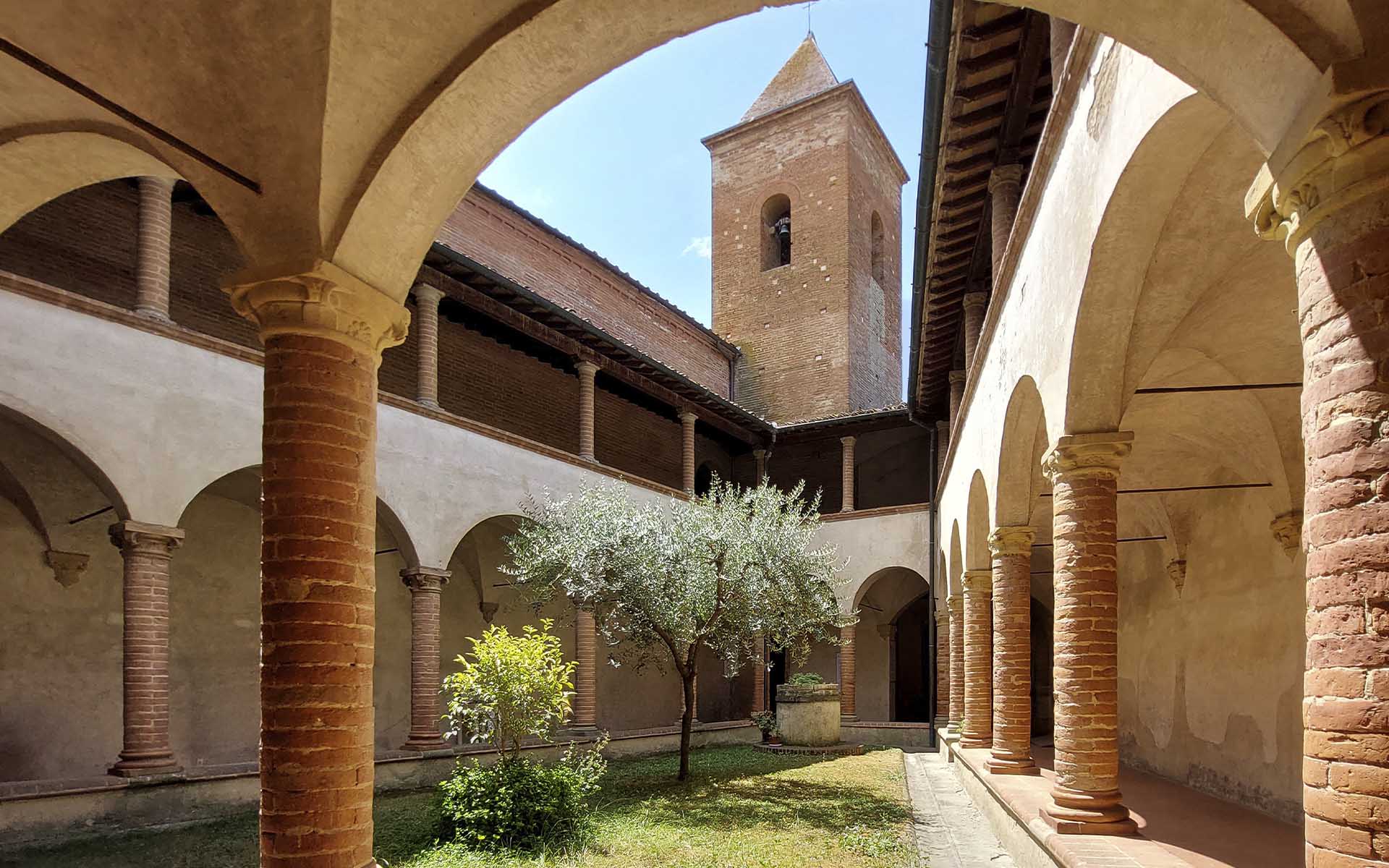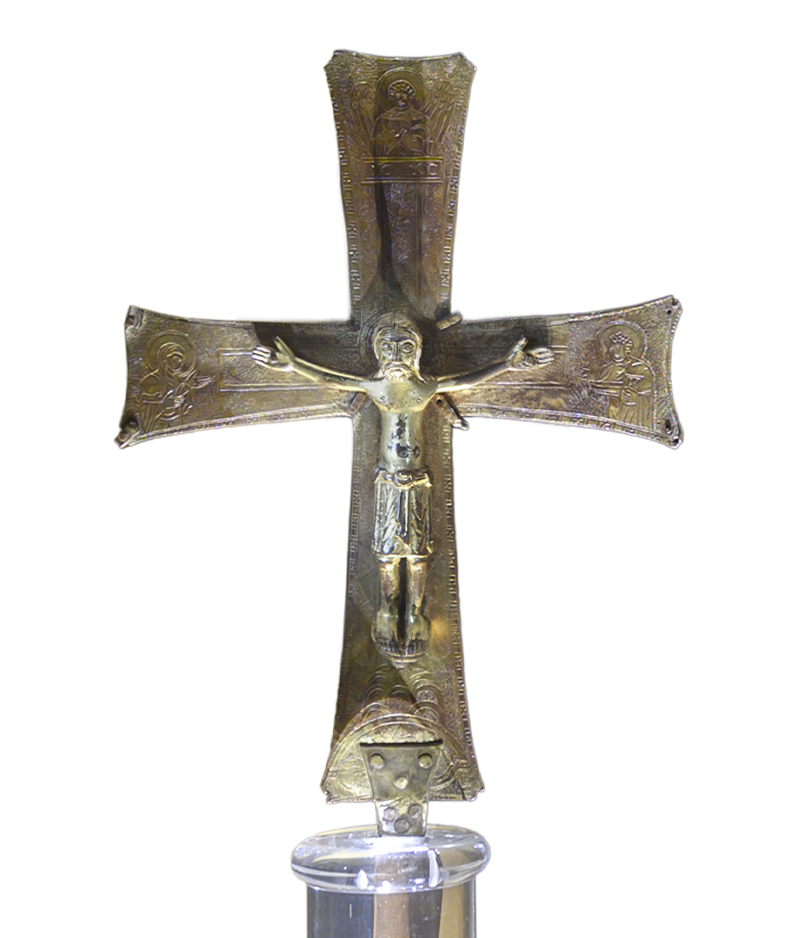This is the oldest astylar cross of the collection, documented since the late 15th century, presenting the divine and human nature of the Savior to the faithful: the victory over death and the hope of resurrection with the full-length figure of Christus triumphans on the front, with on the side arms engraved depictions of Mary and John the Evangelist mourning, accompanied at the top by an angel and at the bottom the Mount Calvary with the body of Christ wrapped in the shroud; the Christus patiens represents the pain of the man led to death through martyrdom, engraved on the back verso with the symbols of the Evangelists in the extremities of the cross.
Commonly attributed to a workshop related to the Rhenish one of Roger of Helmershausen, a Benedictine monk who was among the greatest transalpine goldsmiths, new studies suggest caution in this attribution because of the large group of Crosses, similar for iconography and technical characteristics, identified in various places in east-central Tuscany. The most up-to-date proposal is that this is an artifact produced around the third quarter of the 12th century within a Tuscan workshop, participant in the renewal of the arts thanks to mixing of people and styles.




